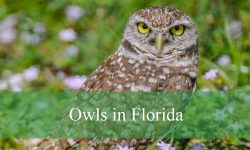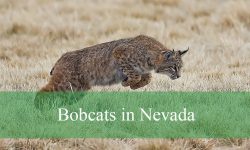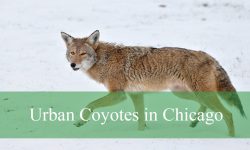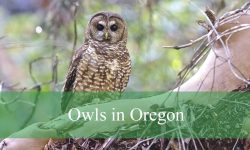Owls in New Mexico are fascinating birds that many people enjoy spotting in the wild. With a variety of species living across the state, these owls can be found in deserts, forests, grasslands, and even urban areas. Each species has unique features that make them special and interesting to learn about.
This guide introduces 13 common owls in New Mexico, helping with identification by their appearance and calls. Birdwatchers of all levels can use this list to better recognize these amazing nocturnal hunters.
Owls in New Mexico play an important role in the ecosystem by controlling rodent populations and maintaining balance in nature. Learning to identify them not only enriches outdoor experiences but also helps support wildlife conservation efforts in the state.
Common Owls in Found New Mexico
Great Horned Owl (Bubo virginianus)
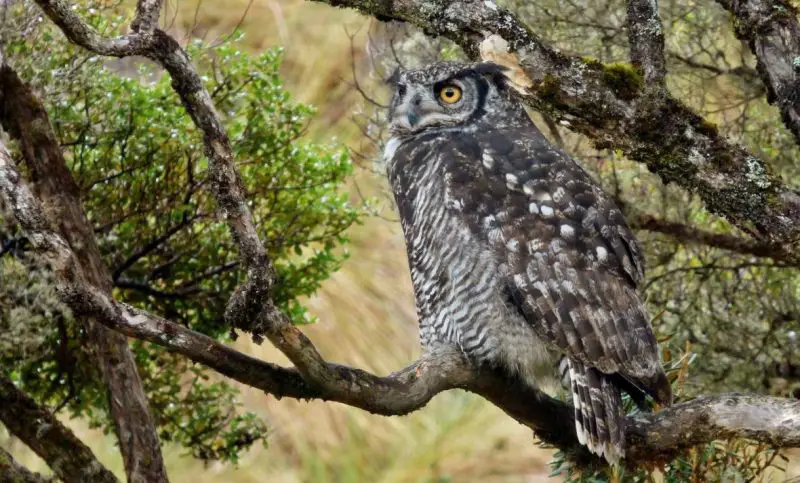
The Great Horned Owl is one of the most powerful and recognizable owls in New Mexico. It is easily identified by its prominent feather tufts that resemble horns, a broad face with a white throat patch, and large yellow eyes set in a rounded facial disc. Its plumage is mottled with brown, gray, and black, offering excellent camouflage against tree bark and desert rocks.
This owl is among the largest in North America, measuring between 18 and 25 inches (46–63 cm) in length, with an impressive wingspan ranging from 3.3 to 5 feet (1–1.5 meters). It has a bulky body and strong talons capable of taking down prey larger than itself. Males and females look similar, though females are usually heavier.
The Great Horned Owl is an apex nocturnal predator, feeding on a wide variety of animals including rabbits, rodents, birds, reptiles, and even skunks. It uses its keen hearing and sharp vision to hunt in complete darkness and is known for its silent flight and powerful dive.
This species is found throughout New Mexico in a variety of habitats including forests, deserts, canyons, and urban areas. It adapts well to both rural and city environments and can be heard hooting at dusk and dawn. Its widespread range and adaptability make it a year-round resident in the state.
American Barn Owl (Tyto furcata)

The American Barn Owl is instantly recognizable by its distinctive heart-shaped facial disc, which is pale white and contrasts with its golden-buff back and wings. Its appearance is slender and elegant, with a ghostly, ethereal look. Unlike many other owls, the Barn Owl lacks ear tufts and has dark, soulful eyes.
Barn Owls are medium-sized, typically measuring 12 to 16 inches (30–40 cm) in length with a wingspan of 3 to 3.5 feet (90–105 cm). They are lightweight, weighing between 400 and 700 grams. Their soft, downy feathers enable them to fly silently, a crucial advantage during night hunts.
This species feeds almost exclusively on small mammals, especially mice and voles. It hunts by flying low over open fields, using its acute sense of hearing to detect prey. Barn Owls are most active after dark and are known for their eerie, screeching calls rather than hoots.
In New Mexico, the American Barn Owl can be found in open grasslands, farmland, desert edges, and near human structures such as barns and abandoned buildings. They are cavity nesters and often choose old buildings or nest boxes for breeding. They are non-migratory and can be observed year-round in suitable habitats.
Short-eared Owl (Asio flammeus)
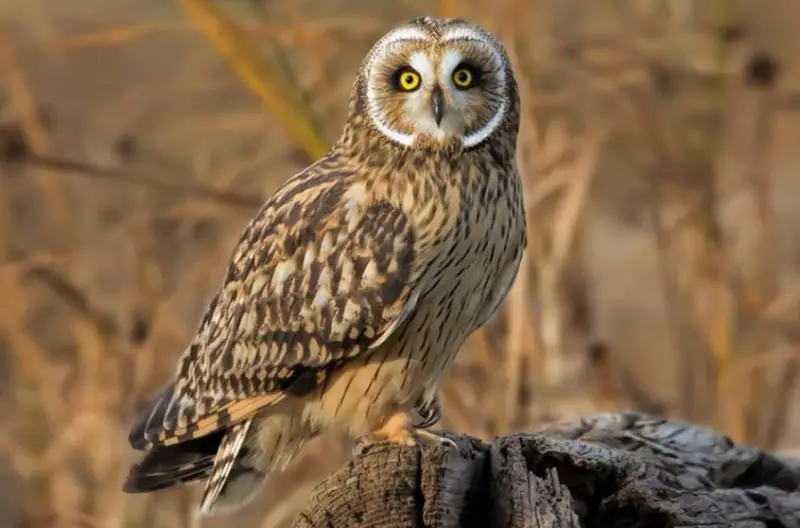
The Short-eared Owl is a medium-sized owl with a round face, yellow eyes, and very short, often invisible ear tufts. Its plumage is mottled brown with buff and white, offering excellent camouflage among grasses. The underwings are pale with dark patches at the bend, which are visible in flight.
Adults measure about 13 to 17 inches (33–43 cm) in length with a wingspan of 38 to 44 inches (97–112 cm). They have long wings and a buoyant flight style that resembles a moth or harrier. The short ear tufts are rarely seen, making this species look more rounded-headed compared to others.
Short-eared Owls are crepuscular and often hunt during dawn and dusk. Their diet mainly consists of voles and other small rodents. Unlike most owls, they frequently hunt in open areas during the day, especially in winter, and often perch on the ground instead of in trees.
In New Mexico, Short-eared Owls are typically winter visitors, though some may stay longer in suitable open habitats like grasslands, shrublands, and prairies. They prefer wide, open landscapes and are most easily spotted when flying low over fields in search of prey.
Long-eared Owl (Asio otus)
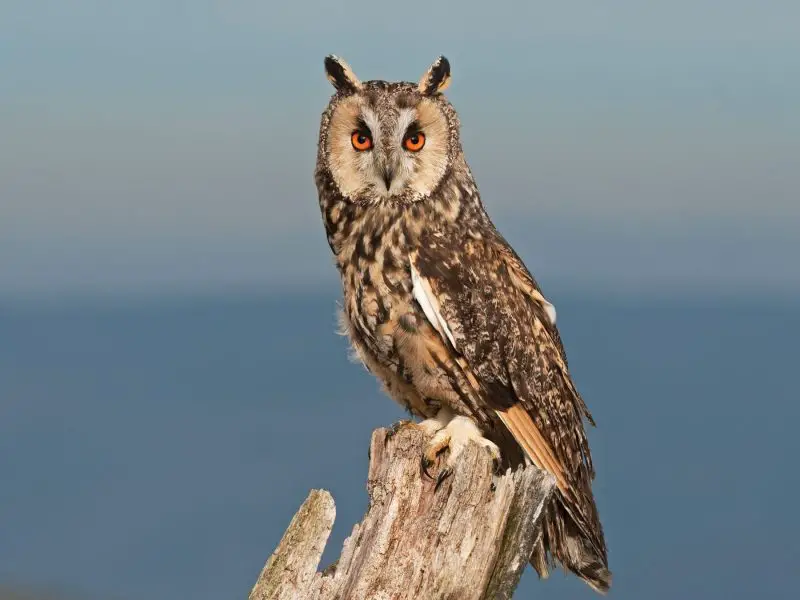
The Long-eared Owl is a slender, medium-sized owl named for its long, upright ear tufts that are positioned close together. Its face is narrow and framed by dark vertical lines, and its eyes are bright orange, giving it a striking expression. The body is brownish with heavy vertical streaks on the chest.
It measures 13 to 16 inches (33–40 cm) in length and has a wingspan of 35 to 40 inches (90–102 cm). Despite their medium size, Long-eared Owls appear tall and thin due to their posture and long tufts. Their flight is silent and graceful, allowing them to hunt efficiently at night.
These owls feed mostly on small mammals like mice, voles, and shrews. They are nocturnal and roost communally in winter, often in dense coniferous trees where they can stay hidden during the day. They hunt by flying low over fields or from perches in woodlands.
In New Mexico, Long-eared Owls prefer wooded areas near open spaces where prey is abundant. They are more secretive than other species and are often overlooked unless flushed from roosts or heard calling during the breeding season. Some are year-round residents, while others migrate seasonally.
Northern Saw-whet Owl (Aegolius acadicus)
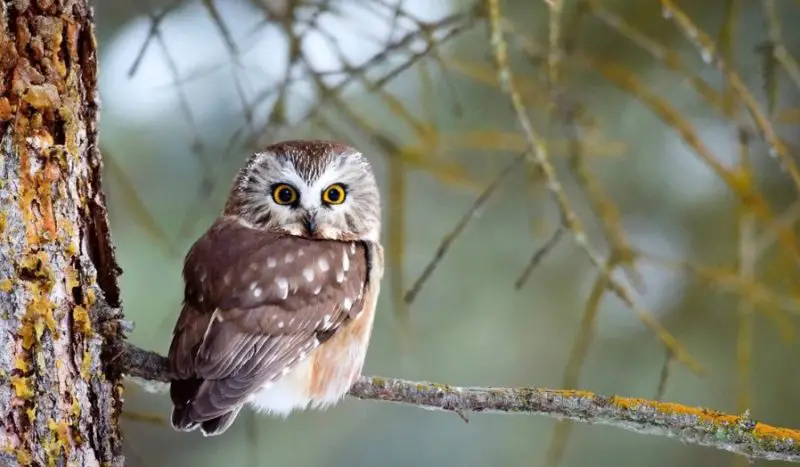
The Northern Saw-whet Owl is one of the smallest owl species in North America, with a round head, no ear tufts, and large yellow eyes. Its face is pale with a darker border, and the body is a rich brown with white streaks on the chest. It gets its name from its repetitive, saw-like call.
Adults are tiny, measuring only 7 to 8.5 inches (18–22 cm) long, with a wingspan of 17 to 22 inches (43–56 cm). They weigh between 65 and 110 grams. Their small size and quiet demeanor make them difficult to spot in dense forests, where they roost close to tree trunks during the day.
Saw-whet Owls feed primarily on small mammals such as mice, especially deer mice. They hunt at night using exceptional hearing and often perch silently before swooping down on prey. They are solitary and shy, with a soft tooting call that can be heard during the breeding season.
In New Mexico, the Northern Saw-whet Owl is mostly found in higher elevation coniferous forests in the north and central mountains. It is more likely to be encountered during fall and winter migration. Their elusive nature and nocturnal habits make sightings a special treat for birders.
Burrowing Owl (Athene cunicularia)

The Burrowing Owl is a small, long-legged owl easily recognized by its upright stance, bright yellow eyes, and lack of ear tufts. Its plumage is sandy brown with white spotting on the back and a white chest with brown barring. It has a flat facial disk and expressive eyebrows that give it a curious, alert look.
This species is about 7.5 to 10 inches (19–25 cm) in length with a wingspan of 20 to 24 inches (51–61 cm). Unlike most owls, the Burrowing Owl is often active during the day, especially in the early morning and late afternoon, and is frequently seen perched on fence posts or the ground.
Burrowing Owls feed primarily on insects, small mammals, and occasionally reptiles and birds. Grasshoppers, beetles, mice, and voles make up most of their diet. They hunt by pouncing from the ground or low perches, and they are known for sprinting after prey on foot.
In New Mexico, Burrowing Owls inhabit open areas such as grasslands, deserts, prairies, and agricultural fields. True to their name, they nest in burrows—often those dug by prairie dogs or other mammals. They are summer residents in the state and migrate southward during the winter.
Spotted Owl (Strix occidentalis)

The Spotted Owl is a medium-to-large owl known for its deep brown color and distinctive white spots on the head, neck, and body. It has dark brown eyes—unusual for owls—and a rounded head without ear tufts. The facial disk is pale brown with darker concentric rings, giving it a soft, watchful appearance.
Adults measure between 16 and 19 inches (40–48 cm) in length, with a wingspan of about 39 to 49 inches (99–124 cm). They have a robust build and fly with slow, deliberate wingbeats, suited for maneuvering through dense forests. Males and females appear similar, though females are slightly larger.
Spotted Owls are nocturnal and prey on a wide range of small animals including flying squirrels, woodrats, bats, and small birds. They hunt from perches, swooping down silently to catch their prey. Their calls are deep and resonant, often heard echoing through forested canyons at night.
In New Mexico, the Mexican subspecies of the Spotted Owl resides in old-growth coniferous and mixed forests, particularly in the southwestern mountain ranges. These owls are highly sensitive to habitat disturbance and are considered a threatened species due to logging and forest fragmentation.
Flammulated Owl (Psiloscops flammeolus)

The Flammulated Owl is a very small, secretive owl named for its flame-like markings. It has reddish-brown plumage with subtle gray tones and fine streaks, which help it blend into pine bark. Its dark eyes are a key field mark, as most owls have yellow or orange eyes. It has tiny, barely visible ear tufts.
Adults are only 5.9 to 6.7 inches (15–17 cm) long with a wingspan of about 14 inches (36 cm), and they weigh around 45 to 63 grams. Despite their small size, they are strong fliers and migrate long distances each year. Their soft hoots can easily go unnoticed, making them difficult to detect.
Unlike many owls that eat mammals, Flammulated Owls primarily feed on insects—especially moths, beetles, and crickets. They forage in the tree canopy at night, often flying from branch to branch in pursuit of their prey. Their diet reflects their warm-weather, forest-dwelling habits.
In New Mexico, this owl inhabits high-elevation pine and mixed-conifer forests during the breeding season. It is a summer visitor, migrating to Central America for the winter. Because of its elusive nature and specific habitat preferences, it is most often detected by its low, single-pitched hoots during summer nights.
Elf Owl (Micrathene whitneyi)
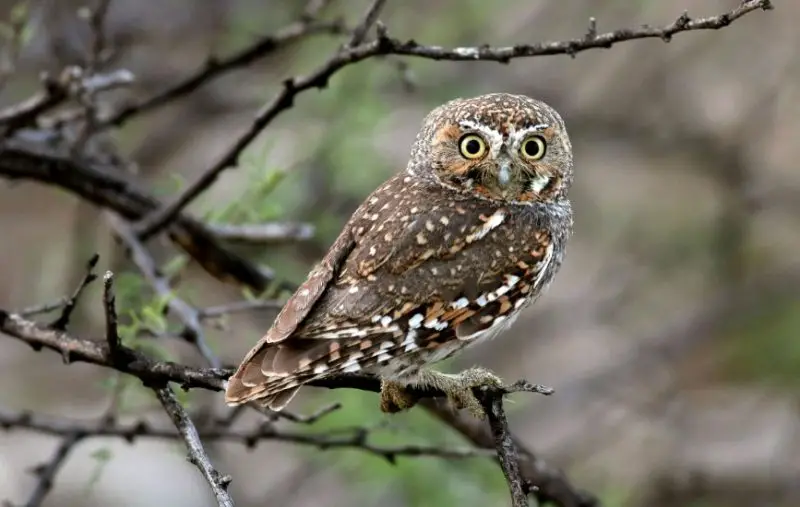
The Elf Owl holds the title of the world’s smallest owl. It has a compact body, short tail, and a round head with no ear tufts. Its plumage is light grayish-brown with fine barring, and it has large yellow eyes that contrast with a pale facial disk. Its tiny size and high-pitched call give it an almost toy-like presence.
Measuring just 4.9 to 5.7 inches (12.5–14.5 cm) long with a wingspan of 10.5 to 10.8 inches (27–28 cm), this owl weighs only 40 grams or less. Despite its size, the Elf Owl is a bold and agile hunter, often diving after insects mid-air or snatching them from the ground.
Its diet is mainly composed of insects such as moths, beetles, scorpions, and crickets, but it may also consume small lizards and spiders. Elf Owls are strictly nocturnal and rely on their excellent hearing and quick reflexes to catch fast-moving prey in the dark.
In New Mexico, the Elf Owl is found primarily in the southwestern part of the state, inhabiting desert canyons, riparian woodlands, and saguaro cacti regions. It nests in old woodpecker cavities in trees or cacti and is present during the spring and summer months before migrating south in fall.
Northern Pygmy Owl (Glaucidium gnoma)
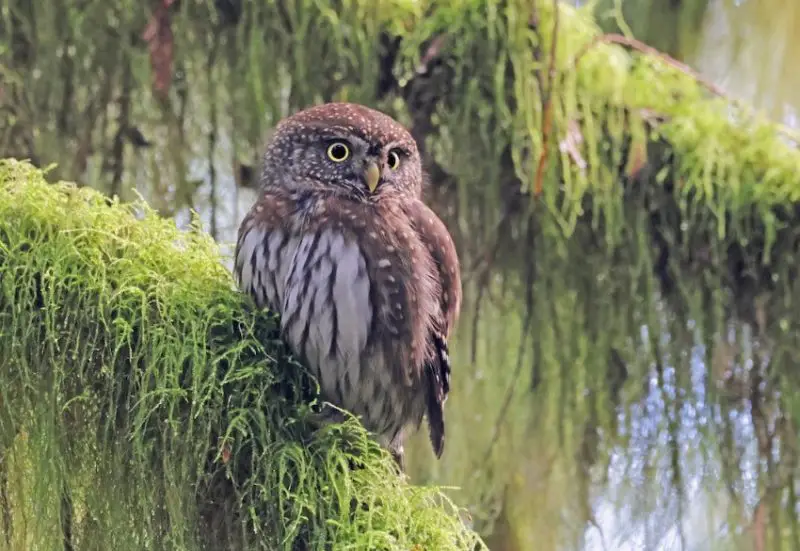
The Northern Pygmy Owl is a small but fierce raptor known for its daytime hunting habits and bold personality. It has a round head, no ear tufts, yellow eyes, and a white face with dark borders. Its back is brown with white spots, while the belly is white with vertical brown streaks. Two dark “eye spots” on the back of the head help deter predators.
This species measures about 6.5 to 7 inches (17–18 cm) long with a wingspan of 15 inches (38 cm), and weighs between 60 and 70 grams. Despite its small size, it often preys on birds close to its own size and is a fast, agile flier in wooded areas.
Northern Pygmy Owls feed on small birds, mammals, insects, and occasionally reptiles. They hunt by day and are known to perch conspicuously while scanning for prey. Their repetitive, tooting call is often mistaken for a songbird, leading to accidental but exciting discoveries by birdwatchers.
In New Mexico, this owl is typically found in mountainous forests, especially pine and mixed-conifer areas in the northern and central regions. It is a year-round resident but can be challenging to find due to its small size and tree-dwelling habits. Birders often locate them by listening for their persistent whistles.
Western Screech Owl (Megascops kennicottii)
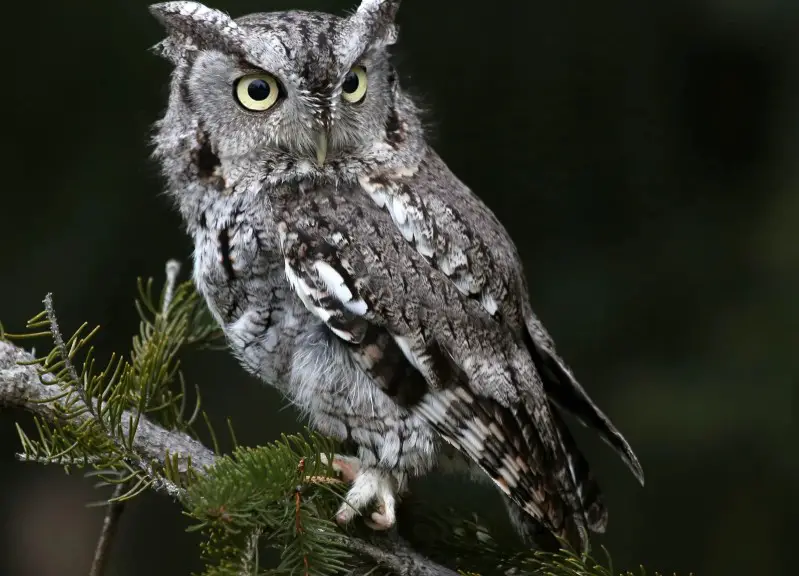
The Western Screech Owl is a small, stocky owl with short ear tufts and a cryptic gray or reddish-brown plumage that helps it blend into tree bark. Its yellow eyes and intricately patterned feathers give it a textured, bark-like appearance. It has a square-shaped head, a barely visible neck, and a pale facial disk outlined by dark borders.
Adults measure about 7.5 to 10 inches (19–25 cm) in length with a wingspan of 21 to 24 inches (53–61 cm), and they weigh between 100 and 200 grams. Their body is compact, and when perched, they often appear stiff and upright. Despite their name, they rarely “screech”—instead, their calls are soft, rhythmic trills.
This owl feeds on a wide variety of prey including insects, small mammals, birds, reptiles, and amphibians. It is an opportunistic nocturnal hunter that uses a sit-and-wait strategy, often pouncing from a perch to capture prey. Thanks to their excellent night vision and silent flight, they are effective predators in dense vegetation.
In New Mexico, Western Screech Owls are found in a range of habitats, including wooded canyons, riparian areas, urban parks, and desert scrublands. They nest in natural tree cavities or old woodpecker holes and are year-round residents throughout the state. Their cryptic appearance and quiet demeanor often make them difficult to spot despite being common.
Boreal Owl (Aegolius funereus)
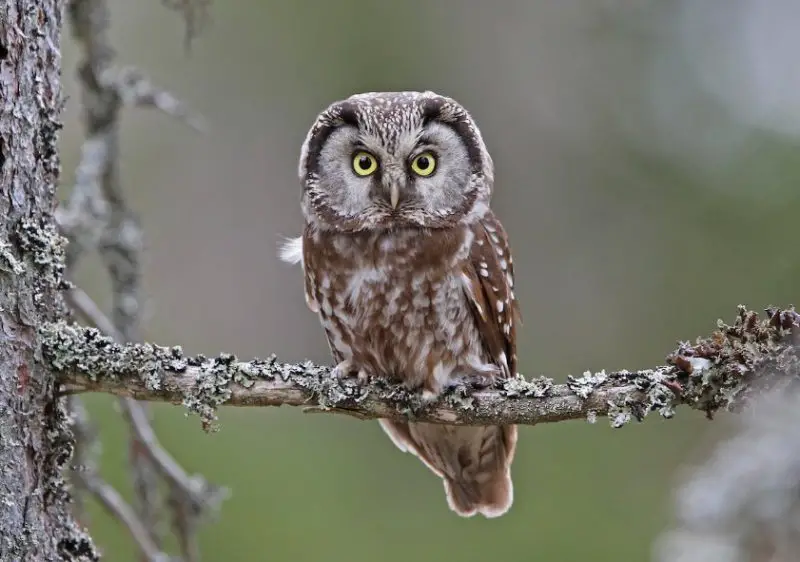
The Boreal Owl is a small, elusive owl with a rounded head, no ear tufts, and large yellow eyes set in a pale facial disk bordered with dark markings. Its plumage is a mix of brown, white, and gray, with white spots on the head and back and streaked underparts. The overall look is soft, giving it a delicate but alert appearance.
This owl is about 8.5 to 10.5 inches (22–27 cm) long with a wingspan of 21 to 24 inches (53–61 cm), and it weighs between 90 and 180 grams. Though compact, it has strong talons and silent flight feathers that make it an efficient hunter. Its nocturnal lifestyle and quiet nature make it difficult to observe in the wild.
Boreal Owls primarily hunt small mammals such as voles, shrews, and mice, though they may also eat small birds and insects. They hunt from perches under cover of darkness, using keen hearing to locate prey under snow or leaf litter. Males emit a soft, rhythmic hooting call during the breeding season to attract females.
In New Mexico, Boreal Owls are rare and primarily occur in high-elevation spruce-fir forests in the northern mountains. They are more common in boreal forests of Canada and the northern U.S., but small populations extend into the southern Rocky Mountains. Their presence in the state is limited and highly localized, making them a prized find for birders.
Mexican Spotted Owl (Strix occidentalis lucida)
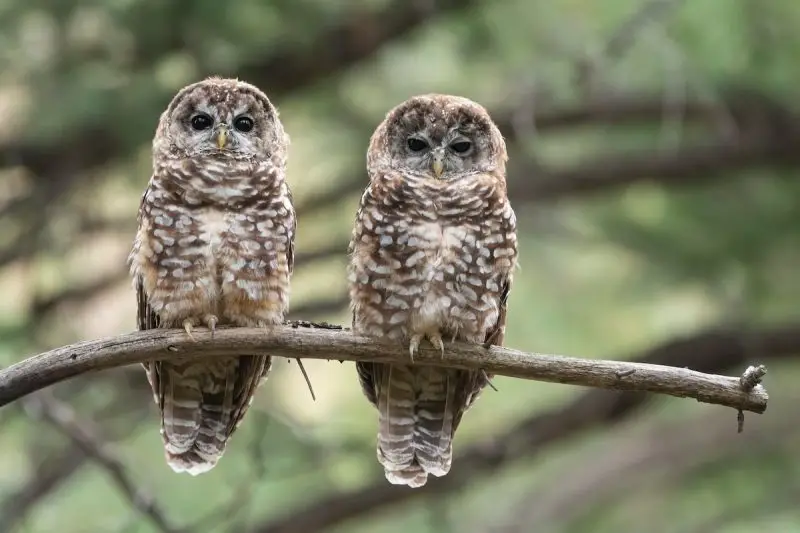
The Mexican Spotted Owl is a subspecies of the Spotted Owl and is distinguished by its paler overall coloration and more extensive white spotting on the head, chest, and back. Like other Spotted Owls, it has a rounded head with no ear tufts, large dark brown eyes, and a pale facial disk bordered with darker lines. Its soft, earthy tones help it blend into shaded forest canopies and canyon walls.
This owl measures between 16 and 19 inches (40–48 cm) in length, with a wingspan of 39 to 49 inches (99–124 cm). Its build is robust but elegant, allowing for slow, maneuverable flight through dense woodlands. Males and females appear similar, although females tend to be slightly heavier.
Mexican Spotted Owls primarily hunt at night, preying on small mammals such as woodrats, mice, and voles, as well as birds and insects. They use elevated perches in the forest to scan and listen for prey before gliding silently through the trees. Their deep, mellow hoots are most often heard during the breeding season.
In New Mexico, this subspecies is found mainly in the central and southern mountain ranges, especially in steep, forested limestone canyons with a mix of pine, oak, and fir trees. Because of habitat loss and degradation, the Mexican Spotted Owl is listed as a threatened species under the U.S. Endangered Species Act. Conservation efforts focus on preserving mature forests and minimizing human disturbance in nesting areas.
FAQ About Owls in New Mexico
What types of owls can be found in New Mexico?
New Mexico hosts a diverse range of owl species including the Great Horned Owl, Burrowing Owl, Mexican Spotted Owl, Barn Owl, Western Screech Owl, Northern Saw-whet Owl, Flammulated Owl, Elf Owl, and others. These owls inhabit various environments from deserts and grasslands to mountainous forests.
When are owls most active in New Mexico?
Most owls in New Mexico are nocturnal, meaning they are primarily active at night. However, some species like the Burrowing Owl and Northern Pygmy Owl may also be active during the day, especially during dawn and dusk hours.
Where do owls typically nest in New Mexico?
Owls nest in a variety of locations depending on the species. Many, like the Great Horned Owl and Spotted Owl, nest in tree cavities or dense forests. Burrowing Owls use underground burrows often made by mammals. Some species also nest in old buildings or cliff ledges.
What do owls in New Mexico eat?
Owls are carnivorous and their diets vary by species but commonly include small mammals (such as mice, voles, and rabbits), insects, birds, reptiles, and amphibians. Larger owls like the Great Horned Owl can take bigger prey including skunks and other birds.
Are any owls in New Mexico considered threatened or endangered?
Yes, the Mexican Spotted Owl is listed as a threatened species under the U.S. Endangered Species Act due to habitat loss and fragmentation. Conservation efforts are in place to protect its critical forest habitat.
How can I identify owls by their calls in New Mexico?
Each owl species has distinct calls. For example, the Great Horned Owl’s hoot is deep and resonant, while the Barn Owl produces an eerie screech. The Flammulated Owl has a soft, low-pitched hoot, and the Northern Saw-whet Owl’s call sounds like a repetitive tooting whistle. Learning these calls can help birders locate and identify owls in the field.
Can I see owls year-round in New Mexico?
Some owls, such as the Great Horned Owl and Western Screech Owl, are year-round residents. Others, like the Short-eared Owl and Boreal Owl, may be seasonal visitors or migrants. The availability of owls varies depending on the season and habitat.

